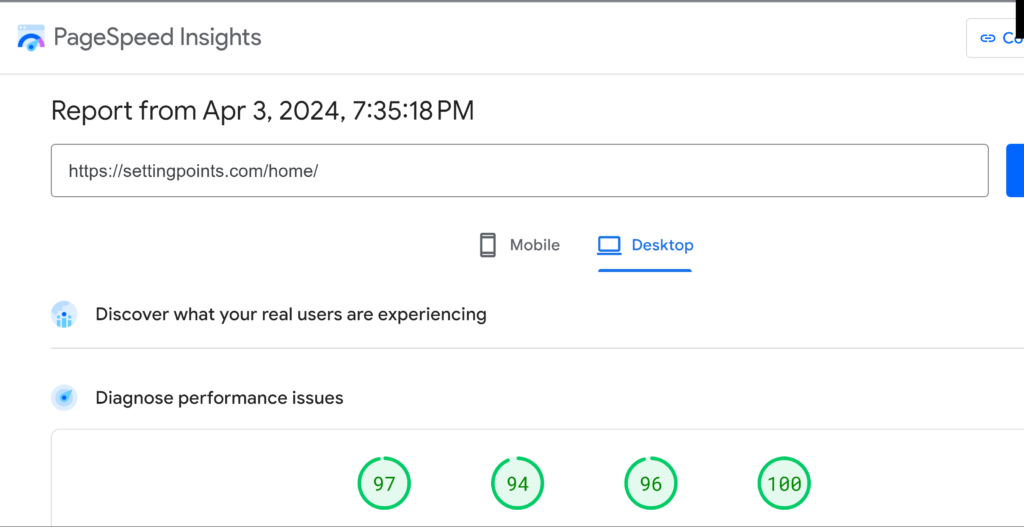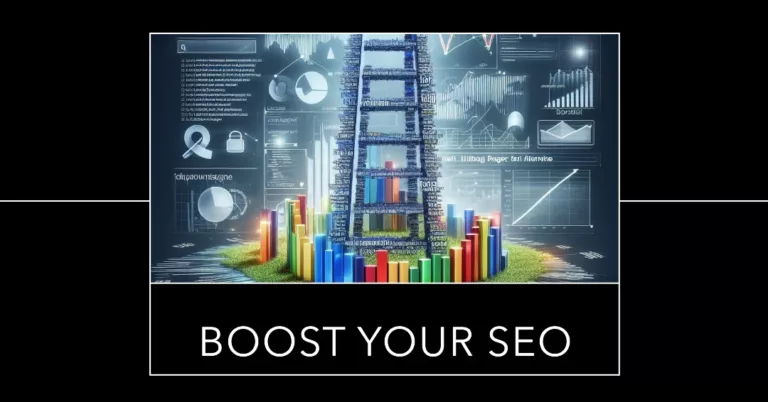Do you have a niche website, blog, or online business? Do you thrive on checklists and revel in checking off the finer points as you accomplish them? If so, welcome to the world of on-page SEO for niche blogs.
Every online content writer has one dream. They dream of creating compelling content that ranks at the top of Google’s search results for a specific niche. Fail in Optimizing Your Content For Better Ranking and your post will be buried beneath a sea of competitors, lost in the digital abyss where few venture. Promise me that you will get this simple task right.
I Promise Not to Fail

This is a promise that you can keep. Easily. With one caveat. Do you know what you are looking for when I say “On-page optimization”? This is where most people fail. The correct answer covers eight distinct things. Can you list all eight of them?
These are in no particular order (yet). I will provide you with a quick top-to-bottom checklist at the end of this exercise.
Most people know:
- Proper Keyword Usage
- Quality Content
- Internal and external links?
Was that a guess? If it was you are correct.
This is where people stop and start guessing. What about you? Do you know the rest of them? If you did, pat yourself on the back. If you don’t, you are like 90% of the niche bloggers, copywriters, website administrators, and anyone else who desires an online presence.
Putting A Bow On It
Imagine your blog post is a book in a library. On-page SEO is like making sure your book has a clear title, is well-organized, and has relevant keywords so that people can easily find it when they’re searching in the library.
To help you stay organized, I have created a checklist with eight tasks in the correct order from top to bottom. This should make it easier for you to complete your tasks efficiently and effectively.
- _____URL Structure – Your blog post’s URL should be simple, and descriptive, and include your target keyword if possible. Avoid long strings of numbers or irrelevant characters. For example, if your post is about healthy smoothie recipes, a good URL might be something like “yourblog.com/healthy-smoothie-recipes”.
- _____Title Tag – This is like the title of your book. It tells search engines and readers what your blog post is about. Make sure it’s descriptive, includes your target keyword (the main topic of your post), and is around 50-60 characters long. Can it be longer? Yes. Should it be? No!
- _____Heading Tags (H1, H2, etc.): These are like the chapter headings in your book. They break up your content into sections and help both readers and search engines understand the structure of your post. Use your target keyword in at least one heading tag (usually the H1 or main heading). FYI – H1, there should be only one. This is your TITLE.
- _____Quality Content: Write high-quality, engaging content that provides value to your readers. Search engines prioritize content that is informative, well-written, and easy to understand. Include multimedia elements like images, videos, and infographics to make your content more appealing.
- _____Keyword Optimization: Sprinkle your target keyword naturally throughout your post, but don’t overdo it. Use variations of your keyword and related terms to make your content more comprehensive and relevant.
- _____Internal and External Links: Include links to other relevant pages on your blog (internal links) and reputable websites (external links). This improves how search engines understand your content’s context and improves the user experience for your readers.
- _____Optimized Images: Use descriptive filenames and alt tags for your images to help search engines understand what they’re about. This also improves accessibility for visually impaired users.
For extra credit, you won’t see this one on your webpage. But it is probably more important than what is on your webpage. Any Idea?
- _____Meta Description: This is like the blurb on the back cover of your book. It’s a brief summary of your post that appears in search engine results. Write a compelling meta description that includes your target keyword and encourages people to click on your link.
There you have it. The eight parts of successful on-page optimization are in order from top to bottom.
Knowledge is Power. How Do I Use This Knowledge?
You have the basic part in your hands. The checklist is vital. Now let’s “kick this up a notch”! This is not just about ticking boxes; a well-optimized page respects and reflects E-E-A-T principles.
Established (E), Expert (E), Authentic (A), and Trustworthy (T)—The E-E-A-T Principles will unlock your blog’s full potential.
Essential On-Page Optimization Using WordPress SEO Plug-ins
WordPress, as a content management system (CMS), offers various built-in features and plugins specifically designed to enhance on-page optimization for websites. One essential strategy that WordPress facilitates is the use of SEO plugins. Plug-ins automate a lot of the routine tasks so you can set it and forget it.
When it comes to SEO Plug-ins, I support RankMath. I am an affiliate member and am compensated for this recommendation, but that is not why I am recommending it. I had All In One (AIO) for a short time. It slowed my website to a crawl, the experience was horrible. It got so bad that it crashed my entire website.
I looked at YOAST. YOAST is similar to RankMath. When I was doing my comparisons, I saw that YOAST carries a larger footprint than Rank Math. When plugins are larger, they will tend to slow down your site speed. With Google on the warpath about page experience being one of its prime directives, smaller and faster is better. Did I mention that Jack Cao, the Rank Math spokesman, is also a Wealthy Affiliate Member?
You ask does it work?

Rank Math is a Search Engine Optimization plugin for WordPress that makes it easy for anyone to optimize their content with built-in suggestions based on widely accepted best practices. Easily customize important SEO settings, control which pages are indexable, and how you want your website to appear in search with Structured data.
When you use RankMath as your SEO plugin in WordPress, you have access to a powerful toolset to optimize your website’s on-page SEO beyond the basic checklist items.
Here’s how RankMath can enhance your optimization efforts:
- Comprehensive Content Analysis: RankMath provides an in-depth analysis of your content’s readability and SEO-friendliness, offering actionable suggestions to improve both. Better SEO optimization equals better rankings.
- Automated XML Sitemap Generation: With RankMath, you can automatically generate XML sitemaps, streamlining the process of indexing your website’s pages for search engines. If you are into analytics, and who isn’t, this is important because when you publish a new post, it automatically notifies Google to come and index your new piece. I have had my posts indexed, and placed on the front page, all within a couple of hours. That is how I know that it is working.
- Rich Schema Markup Integration: RankMath allows you to easily add rich schema markup to your content, providing search engines with valuable context about your website’s content. I see your forehead wrinkle. What is Rich Schema? First, it is not something that you will see on your webpage. Rich schema markup is added directly to the HTML code of your website’s pages. It provides search engines with additional information about the content on your page. Think of it as an owner’s manual for your content. The manual explains what the page is about allowing better indexing. If you don’t have an SEO plugin, like Rank Math, you would have to manually add Rich Schema to the HTML or do without and rely solely on your content. Get the plugin!
- Advanced Social Media Integration: RankMath offers features to optimize your content for social media sharing, including customizable meta tags and Open Graph markup for enhanced visibility on social platforms. As with every one-man online business, you will need to wear many hats. When you publish a post, what is the first thing that you should do? Tell social media what you have done to enhance page views and encourage comments.
- Robust Redirect Management: RankMath includes tools for managing redirects effectively, helping you maintain a seamless user experience and preserve SEO value. Redirects are signposts that say hey, my content has moved.
When you date the title of your post, like “The Best On-Page Optimization Tactics for 2023” it lost value when the calendar turned to 2024. What can you do with this old post? Update the title (and content if necessary) to 2024 and republish it. You change the title, you change the URL. Rank Math automatically redirects traffic to the new post. - Performance Optimization Features: RankMath provides options to improve website performance, such as caching mechanisms and optimization of CSS and JavaScript files for faster loading times. I am not going to go into much depth here about page caching, just know that Google Hates Slow Websites: Do This or Risk Getting Demoted. This post explains it all.
- Local SEO Capabilities: For businesses targeting local audiences, RankMath offers tools to optimize your website for local search, including the creation of location-specific landing pages and integration with Google My Business. Do you want your brand (and services) on the front page of your hometown? Here is your chance.
By leveraging RankMath’s extensive feature set, you can take your on-page SEO efforts to the next level and maximize your website’s visibility in search engine results.
The Key To Connecting With Your Audience Is Mastering Niche SEO

You got it! I have an entire post dedicated to connecting with your audience using Niche SEO. When you run a niche blog, your primary goal might be to reach a particular audience or to rank well for local searches. Tailoring your blog’s on-page SEO to these targets is critical. Here’s how you can fine-tune your optimization strategies to meet the interests and needs of your specific audience, all while improving your visibility in local search results.
Keywords
Essential to any SEO strategy, keywords act as the connecting dots between your brand and your target audience. Begin by brainstorming topics and themes related to your niche. Consider the specific aspects that your audience may search for in relation to the products, services, or solutions you offer. Keep track of as many relevant keyword ideas as possible. These keywords will guide your content creation and optimization efforts, ensuring that your website aligns with what your audience is actively seeking.
Navigating niche SEO involves strategic keyword research and content alignment to resonate with your specific audience. By focusing on relevant keywords, you can enhance your website’s visibility and connect more effectively with your target market.
Expanding Your Reach: Advanced On-Page SEO Techniques for Growth
By now, you have a solid understanding of on-page SEO and how it can boost your niche blog’s presence in search results. The 8 part checklist was a great start. Adding in the Rank Math SEO plugin was a great touch. But mastering this craft involves more than just adhering to basics and automating routines. It’s about continuously evolving and adapting to the wanderings of your audience and the shifting landscape of Google’s algorithms.
Wax On, Wax Off

Among the most critical aspects of advanced on-page SEO is the ability to audit your own content regularly. There you have it. You need to READ YOUR OWN POSTS! This ensures that your site’s structure, internal linking, and mobile responsiveness are up to par. Evaluate your content’s performance metrics and refine your approach based on data-driven insights. By doing so, you can effectively steer your blog towards long-term growth and success.
Remember the importance of aligning your efforts with the principles of E-E-A-T. Demonstrating expertise and authoritativeness, coupled with fostering trust, is not just about impressing algorithms; it’s about valuing your readers. Create content that stands out, educates, and provides genuine value.
What Did You Learn Today?
Keeping abreast of SEO trends is key. Join forums, read SEO news, and perhaps even test out new techniques on secondary pages of your blog to gauge their impact before rolling them out sitewide. Embrace the notion that SEO is a journey, not a destination.
Advanced on-page SEO is an investment in your niche blog’s future. It’s about refining existing strategies, learning new techniques, and ensuring that your readers always leave your blog enriched by what they’ve found. Your commitment to quality, relevance, and user experience is what will ultimately underscore your success in Google’s rankings and beyond.
The Unparalleled Benefits of Mastering On-Page Optimization for Niche Blogs

Leveraging on-page optimization techniques tailored specifically for niche blogs can unlock a myriad of benefits that propel your online presence to new heights. By meticulously crafting SEO-friendly content that resonates with your target audience, you’ll enjoy increased visibility, enhanced user engagement, and ultimately, a higher return on your niche blogging efforts.
Improved Search Engine Rankings – Implementing on-page optimization best practices ensures that your niche blog content is easily discoverable by search engines, boosting your chances of ranking higher for relevant keywords and attracting qualified organic traffic.
Targeted Audience Attraction – By strategically incorporating niche-specific keywords and crafting content that aligns with your audience’s interests and search queries, you’ll effectively connect with your target market, fostering a loyal readership and establishing your blog as an authoritative voice within your niche.
Increased User Engagement – Optimized content that delivers value, readability, and a seamless user experience will encourage visitors to spend more time on your niche blog, reducing bounce rates and fostering deeper engagement with your brand.
Competitive Edge – In the crowded online landscape, mastering on-page optimization for niche blogs can give you a significant advantage over competitors who neglect this crucial aspect of SEO, allowing you to captivate your audience more effectively and establish a strong online presence.
By embracing the power of on-page optimization techniques tailored explicitly for niche blogs, you’ll unlock a world of opportunities, driving targeted traffic, cultivating a loyal audience, and positioning your blog as a go-to resource within your specialized domain.
If you have found this post enlightening, I would appreciate your comments.
If you are interested in joining my community, feel free to drop by my Wealthy Affiliate profile. I am a ranking WA member and enjoy the camaraderie.








